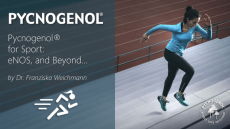Amino acids and ketoacids offer muscle support in protein-restricted patients

The authors from Milan, Italy, have found that these interventions offer potential benefits for CKD patients, but additional research is necessary to gain deeper insights into the ideal protein intake and tailored nutritional strategies based on different CKD stages and specific patient populations.
Sarcopenia and CKD
Loss of muscle mass is a frequent complication in patients with CKD, due to increased protein catabolism and reduced protein synthesis, resulting in a negative protein balance.
CKD is recognised for its connection to protein intake and the development of metabolic disorders caused by uremia. This association leads to diminished skeletal muscle anabolism and heightened catabolism, increasing the vulnerability of CKD patients to sarcopenia.
The authors of the new review aimed to explore how the loss of muscle mass in CKD can be affected by nutritional strategies aiming to improve muscle mass and muscle strength.
Nutritional strategies
According to the authors of the review, proper nutritional and dietary support are crucial for all stages of CKD.
Particularly, nutritional therapy plays a vital role in slowing the progression to end-stage kidney disease (ESKD) and delaying the need for renal replacement therapy.
In addition to these benefits, dietetic interventions aim to preserve good nutritional status, prevent protein-energy wasting (PEW), maintain electrolyte balance, and prevent bone and mineral abnormalities.
Protein restriction is often used to manage uremic toxicity and slow the progression of renal failure, however, the authors note that this should be carefully balanced with adequate energy intake to maintain a neutral or positive nitrogen balance.
The review
The review noted previous research which has explored various strategies to combat muscle loss in CKD patients.
One study demonstrated that resistance training, in combination with a low-protein diet, significantly increased muscle mass, total body potassium, and muscle fibre cross-sectional areas in older patients with moderate renal insufficiency.
Another study on exercise and amino acid supplementation among elderly Japanese women with sarcopenia, revealed that the combination of exercise and amino acid supplementation led to improvements in muscle mass, muscle strength, and walking speed compared to the control group.
While protein restriction has traditionally been the primary nutritional treatment for CKD patients, the authors of the review suggest that other dietary factors such as sodium, phosphorus, energy intake, protein sources, lipid intake, and essential amino acid and ketoacid (KA) supplementation in low-protein diets (LPDs) and very low-protein diets (VLPD)also play important roles.
One study demonstrated that a LPD supplemented with KAs and amino acids allowed a slowing of the progression of renal disease and reduced CV risk, explained by the fact that the supplemented LPD carried a low amount of phosphorus which induced a negative balance to determine a decrease in serum phosphorus.
Another study evaluated the effect of an LPD supplemented with ketoanalogue (EAA/KA) therapy on the rate of eGFR decline in 96 patients with CKD stages 3B-5. Results showed a reduction in CKD progression, particularly in older female patients.
The authors of the current review conclude that LPDs and very low-protein diets VLPDs supplemented with essential amino acids and ketoacids have shown beneficial effects in preserving muscle mass and slowing the progression of CKD.
They further conclude that LPDs can reduce muscle protein breakdown and improve the efficiency of protein metabolism, while VLPDs can further reduce the negative net protein balance and improve muscle protein turnover.
However, they recognise: “The protein requirements of patients with CKD, particularly the elderly, are complex and may differ due to age-related factors, reduced renal function, changes in body composition, and other considerations.
“Elderly patients with CKD may require higher protein intake to maintain lean body mass and prevent sarcopenia. However, the optimal protein intake for elderly CKD patients is still controversial, and individualised approaches are needed.”
Journal: Nutrients
https://www.mdpi.com/2072-6643/15/14/3107
“Nutritional Strategies to Prevent Muscle Loss and Sarcopenia in Chronic Kidney Disease: What Do We Currently Know?”
Authors: Giulia Massini, Lara Caldiroli, Paolo Molinari, Francesca Maria Ida Carminati, Giuseppe Castellano, and Simone Vettoretti.












